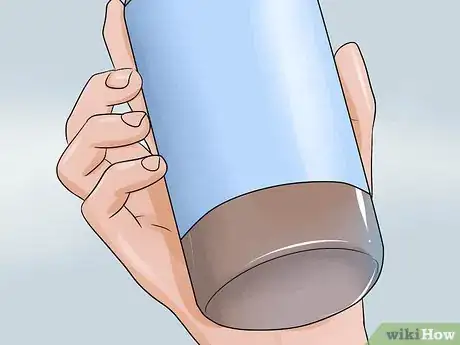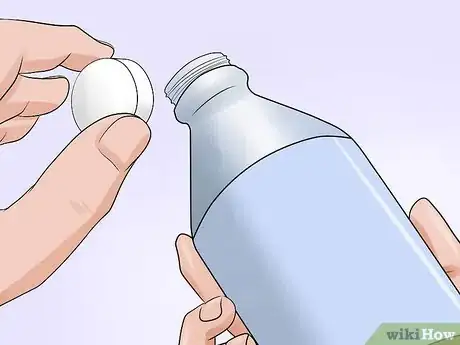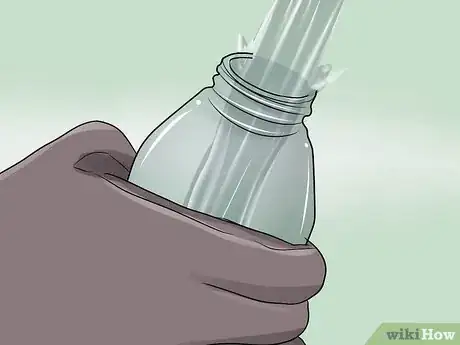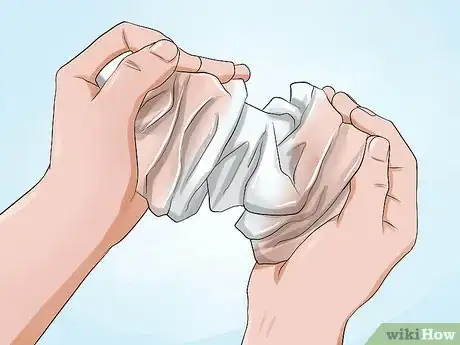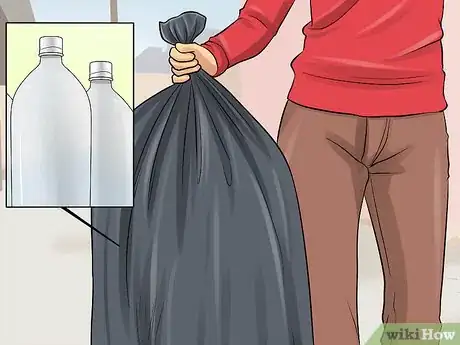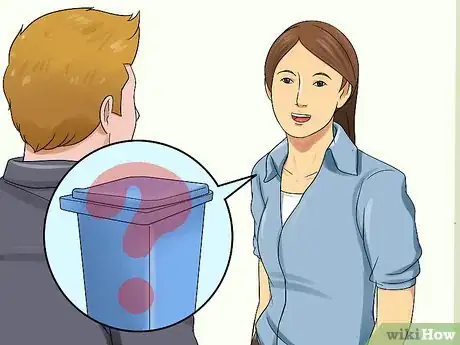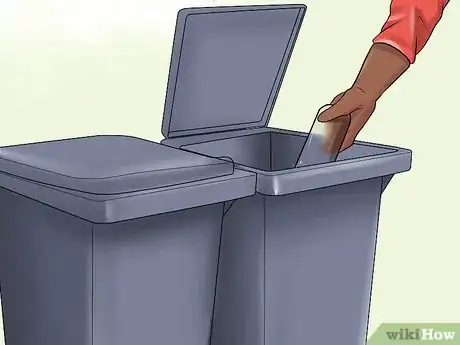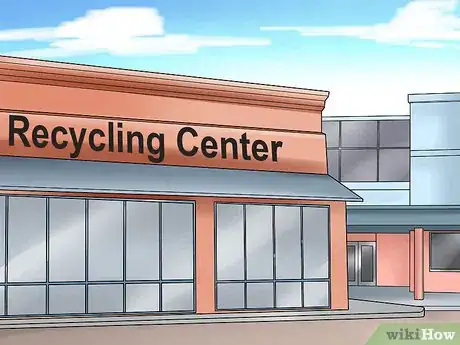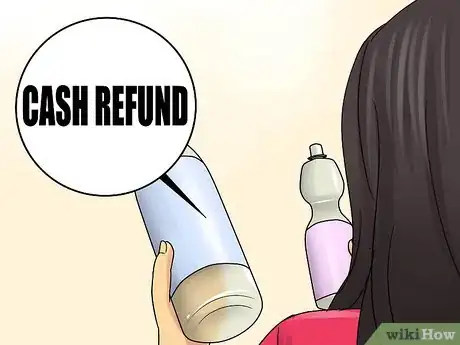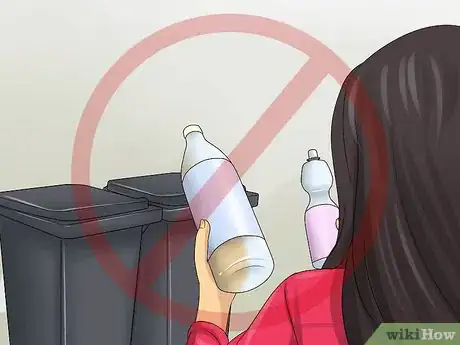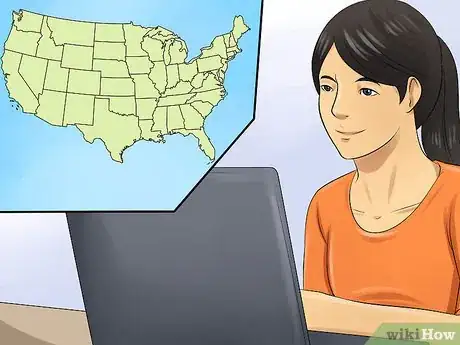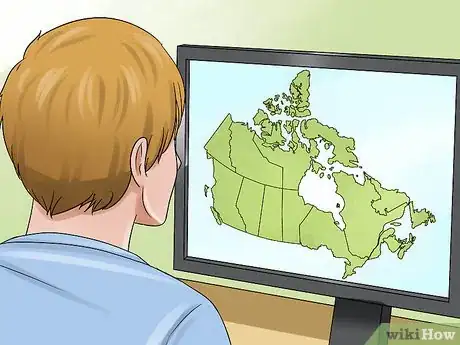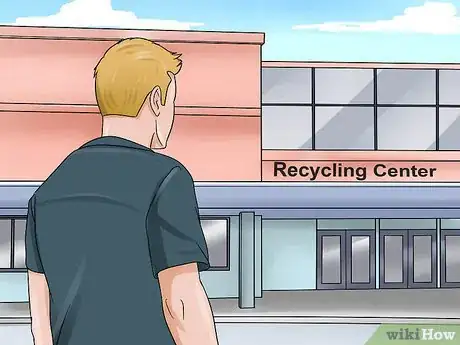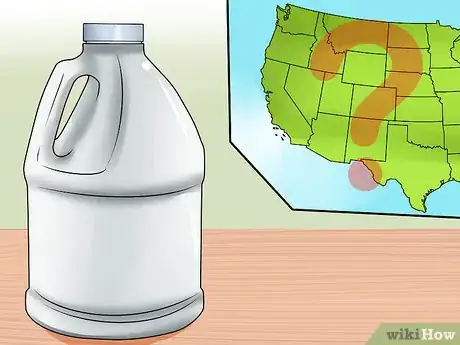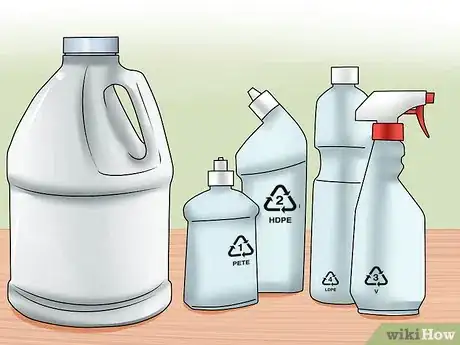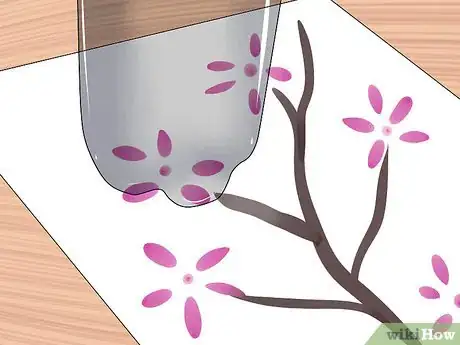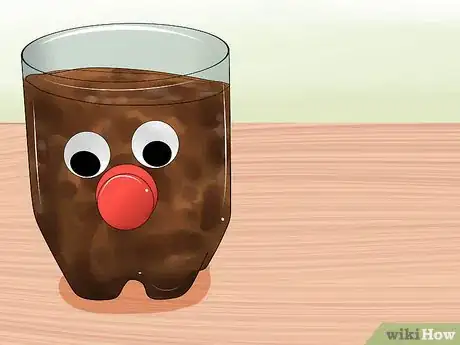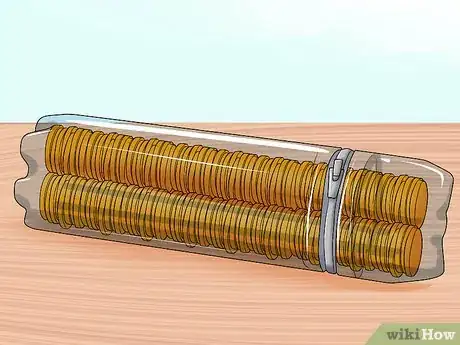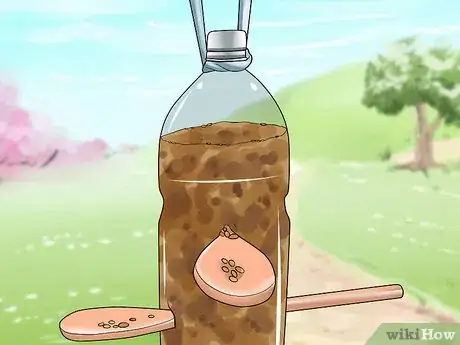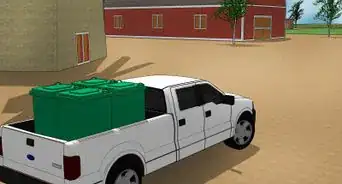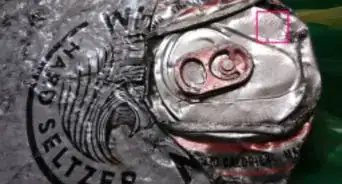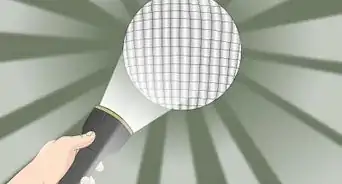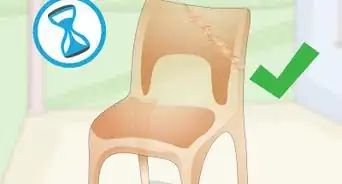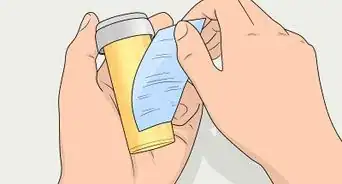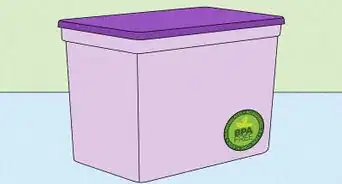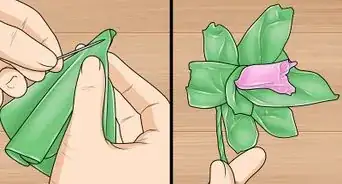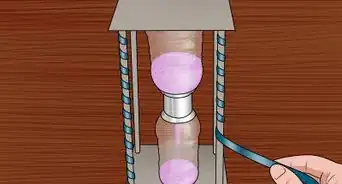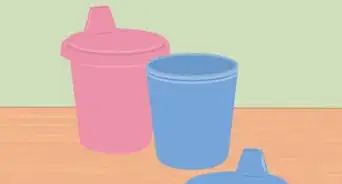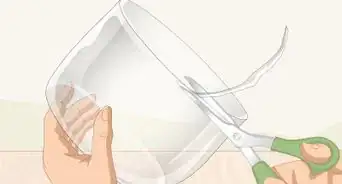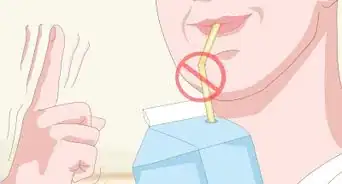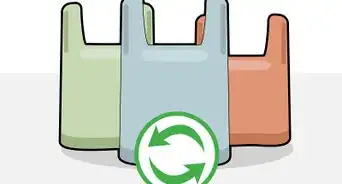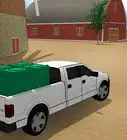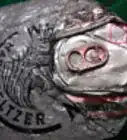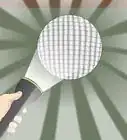This article was co-authored by Kathryn Kellogg. Kathryn Kellogg is the founder of goingzerowaste.com, a lifestyle website dedicated to breaking eco-friendly living down into a simple step-by-step process with lots of positivity and love. She's the author of 101 Ways to Go Zero Waste and spokesperson for plastic-free living for National Geographic.
There are 10 references cited in this article, which can be found at the bottom of the page.
wikiHow marks an article as reader-approved once it receives enough positive feedback. In this case, 90% of readers who voted found the article helpful, earning it our reader-approved status.
This article has been viewed 414,092 times.
40 billion plastic bottles are produced each year in the United States, mostly for beverages. Two-thirds of them end up in landfills. All things considered, this is not good for the environment. Avoid landfill by recycling them.
Steps
Preparing for Recycling
-
1Check the bottom of the bottle. You will see a number between 1 and 7. This is a resin number and it tells you what kind of plastic the bottle is made out of. It may also determine whether or not it can be recycled by your local recycling center.
- If your bottle can't be recycled by your local recycling center, try reusing it or turning it into a craft project. Click here to get some ideas.
-
2Take the cap off. Some recycling centers won't accept bottle caps. If this is the case, you can either discard it, find a place that does accept bottle caps, or turn the bottle cap into a craft project. If the recycling center does accept bottle caps, set it aside for later; you will need to clean the bottle first before you put the cap back on.[1]
- Most recycling centers don't accept bottle caps because they are made out of a different type of plastic that the bottle is made out of. This may result in contamination during the recycling process.[2]
Advertisement -
3If required by your local recycling services, rinse the bottle with water. Fill the bottle partway with water, and put the cap on. Shake the bottle to slosh the water around. Open the bottle again, and pour the water out. If the bottle is still dirty inside, you may need to do this a second or third time. The bottle doesn't need to be perfectly clean, but there should be no residue inside it.
- Skip it unless there's a compelling reason so you're not trading off one type of resource conservation with wasting another resource. Materials are washed during the recycling process, so unnecessary washing only leads to wasting water. You should be conscious of water usage, especially in areas that suffer from drought.
- If your recycling center accepts bottle caps, then put the cap back on the bottle.
-
4Remove the label and plastic seal, if necessary. Some places don't care if there is a label or plastic seal on the bottle, while others do care (especially if they are buying the bottles back based on weight). If you plan on reusing the bottle for a craft project, you may want to remove the label as well for a cleaner finish.
- Some recycling center requires to remove the labels.
-
5Repeat the process for the other bottles. It is usually a good idea to recycle several bottles all at once, especially if you are planning on taking them to a recycling center. This will save you a few trips.
-
6Consider crushing the bottles if you have a lot of them. This will help save space in the recycling container, or in the bag if you are taking them to a center.[3] If your bottle has a cap on it, be sure to take the cap off first. To crush the bottle, simple crumple it between your hands, or stomp on it.
-
7Place the bottles into a bag. The bag can be made out of paper of plastic. You won't be recycling the bag, but it will make it a lot easier to carry the bottles to a recycling bin or recycling center.
-
8Find out what kind of program your community has for recycling plastics. Some places require you to take the bottles to a recycling center while others will ask you to leave the bottles in a blue bin. Some places will even give you money back for your plastic bottles. If you are interested in selling your bottles back to your community for money, click here.
-
9Empty the bag of bottles into a recycling bin for "curb-side recycling" if you live in a house. When you moved into your home, the city might have supplied you with a blue or black recycling bin. Most people keep their bin in their garage or backyard. Be sure to check with your city to see what day the recycling truck comes to empty these bins. You will need to take your bin out the night before, and leave it by the curb.
- If you go to college and live in a dorm, see if there is a recycling bin on campus that you can use.
-
10Take the bottles to a recycling center if you don't have a recycling bin at home. You will need to check with your state or city to see where the closest one to you is located. Most should be reachable by bus, or be within driving distance.
-
11Consider taking the bottles to a buy back center if you live in a state that offers it. Some states offer you money in return for plastic bottles. Most of the bottles in these states will be stamped with "CASH REFUND" or "CRV." If you live in one of these states, visit your city's website to find out where the nearest buy back center is. Click here to find out more about this.
Recycling for Money
-
1Look for "CASH REFUND" or "CRV" on the top or bottom of your bottle. Sometimes, you might even see an amount, such as 5¢ or 15¢. This determines how much money you will get back.[4]
-
2Don't try to earn extra cash by taking plastic bottles out of other people's recycling containers. This is against the law in most cities. It's known as recycling theft and could earn you a citation. In most cases, the price you end up paying is much greater than the 5¢ or 15¢ the bottle might get you. It's not worth it.
-
3Know what states in the US offer Cash Refunds and CRVs. If your state haves a buy back program, you can take your plastic bottles to a special center and get between 5¢ and 15¢ back per bottle. How much you get back will depend on the state that you live in, and the size of the bottle. At the time of writing this article, the following states have buy back programs:
- California
- Connecticut (no HDPE plastic)
- Hawaii (PET and HDPE plastic only)
- Iowa
- Massachusetts
- Maine
- Michigan
- New York
- Oregon
- Vermont
-
4Know what territories in Canada offer cash refunds for plastic bottles. Depending on which territory you live in, you can get anywhere between 5¢ and 35¢ per bottle. At the time of writing this article, the following territories offer cash refunds for plastic bottles:
- Alberta
- British Columbia
- Manitoba (beer bottles only)
- New Brunswick
- Newfoundland
- Nova Scotia
- Ontario
- Prince Edward Island
- Quebec
- Saskatchewan
- Yukon Territory
- Northwest Territories
-
5Make sure that the bottles are clean and the caps are taken off. Most recycling centers will not take back dirty bottles. Some also request that you remove the cap as well. Check with your local recycling center to see what their requirements are.
-
6Take the bottles to your local recycling or "buy back" center. To find out whether or not your city has one, visit your city's website. If you live in the United States, keep in mind that just because a certain state offers cash refunds for plastic bottles does not mean that the state's recycling center will take back every plastic bottle. Most states will only accept plastic bottles that actually say "CASH REFUND" or "CRV" and will not accept blank, out-of-state bottles.
-
7Consider checking with your city to see if there are any centers that purchase plastic bottles. If you live in another country, this could be a great option for you. Most such centers do not have a walk-in service; you will need to ship your plastic bottles to them. The center will then either pay you based on the weight of the bottles, or how many bottles you send in. Here are some other things that could affect the amount you get back:
- The type of plastic
- The of the plastic
- The physical properties of the plastic (such as density, melting point, etc)
- The quality of the plastic
-
8Know that not every recycling center accepts every type of plastic bottle. There are many different types of plastic that a bottle might be made out of. The most common types are #1 and #2. They are also the most widely accepted. Also, keep in mind that a bottle's shape and size will also determine whether or not it can be recycled. Some centers only accept bottles of a certain size, while others have size limits.[5]
Repurposing and Upcycling
-
1Use the bottom of a 2 liter (0.53 US gal) soda bottle to stamp cherry blossom designs onto a large sheet of paper. Use a thick brush to paint a branch on a long piece of paper. Dip the bottom of the bottle into pink paint, and then use it to stamp cherry blossom patterns around the branch. Paint a few black or pink dots in the middle of each blossom.[6]
- The best bottle to use for this project has 5 to 6 nubs or bumps on the bottom. These will make the petals.
-
2Make a Chia pet out of a 2 liter (0.53 US gal) bottle. Cut the bottom half of a 2 liter (0.53 US gal) soda bottle off. Use hot glue to stick on a bottle cap for a large, funny nose, and two googly eyes. Fill the bottle with soil and dampen it with water. Sprinkle the dirt with some fast-growing grass seed.[7]
-
3Turn several 2 liter (0.53 US gal) bottles into snack bowls. Cut the bottom part off of several 2 liter (0.53 US gal) bottles. Decorate the outside with some paint, colored paper, or stickers. Fill each cup with some nuts, crackers, or candy, and use it for your next party.
-
4Turn two plastic bottles into a zippered coin purse. Cut the bottom 1 ½ inch (3.81 centimeters) off of two water bottles using a craft knife. Discard the top part and keep the bottom. Find a zipper that can wrap all the way around the bottle. Put a line of hot glue around the inside rim of one of the bottles. Press the fabric part of the zipper against the glue. The zipper pull should be on the outside of the bottle, and the teeth should be lined up with the rim. Open the zipper, then place a line of hot glue around the inside rim of the other bottle. Press the other side of the zipper against the glue. Wait until the glue hardens, then close the zipper. You have just made a little zipper coin purse.[8]
- You can make a pencil case by cutting the top part off of one bottle, and the bottom 1 ½ inch (3.81 centimeters) off of another. You will end up with a short bottle bottom, and a long bottle bottom. Use these instead to make a pencil case.
-
5Make a greenhouse for a plant. Fill a small terracotta flowerpot with soil. Dampen the soil and make a small hole in the center. Drop a few seeds into the hole and cover it with more soil. Cut a 2 liter (0.53 US gal) bottle in half, and discard the bottom half. Take the cap off, and place the top domed part over the flower pot. The bottle with either sit right on the rim of the flowerpot, or it will fit over the entire flowerpot.
- Consider painting a label on the flowerpot with some chalkboard paint. You can then write on the label with a piece of chalk for a rustic look.
-
6Turn a plastic bottle into a birdfeeder. Cut a plastic 2 liter (0.53 US gal) bottle in half and discard the top half. Cut a large rectangle into the side of the bottle; the rectangle should be no wider than your hand. You will be filling the bottom of the bottle with birdseed, so don't cut all the way down. Punch two holes along the rim of the bottle; make sure that they are right across from each other. Thread a piece of cord through the holes, and tie it in a knot. Fill the bottom of your birdfeeder with some birdseed, and hand it up in a tree.[9]
- You can paint your birdfeeder with some acrylic paint to make it more colorful. You can also glue squares of tissue paper to it as well. Be sure to seal it afterward with some clear, acrylic spray paint sealer.
-
7Use the bottle caps to make a mosaic artwork. Not every recycling center will accept bottle caps, but this doesn't mean that they have to go to waste. Use hot glue to attach bottle caps to a piece of white cardboard, illustration board, or foam board. Place a big drop of glue to the top of the bottle cap and press it down onto the cardboard.
Community Q&A
-
QuestionAre all shapes of #1 plastic recyclable as well as narrow-neck bottles?
 Community AnswerNot necessarily. It's best to check for the recycling information/symbol on the container to make sure that it can be recycled.
Community AnswerNot necessarily. It's best to check for the recycling information/symbol on the container to make sure that it can be recycled. -
QuestionDo I need to crush cans before recycling them?
 Community AnswerYou don't have to, but you can if you want to help preserve room in your recycle bin.
Community AnswerYou don't have to, but you can if you want to help preserve room in your recycle bin. -
QuestionHow can we recycle with plastic bottles?
 Community AnswerTake a bottle and fill it 1/4 with bottle caps. Secure the top then use it as a toy for a child or an instrument.
Community AnswerTake a bottle and fill it 1/4 with bottle caps. Secure the top then use it as a toy for a child or an instrument.
Warnings
- 40 billion plastic bottles are produced each year in the United States. Two-thirds of them end up in landfills. Avoid this by recycling them.⧼thumbs_response⧽
- Don't take plastic bottles out of other people's blue recycling containers. This is against the law in most cities, and known as recycling theft. The price you may end up paying will be greater than the five centers the bottle might earn you.⧼thumbs_response⧽
- Refilling a plastic bottle with water and drinking it may sound like a good idea, but it really isn't. Some plastic bottles leech chemicals into the water, giving it a funny taste. Also, the more you reuse a plastic bottle, the more bacteria it gathers.[11]⧼thumbs_response⧽
References
- ↑ Earth 911, How to Recycle Plastic Jugs and Bottles
- ↑ Stanford University, Frequently Asked Questions: Plastic Recycling
- ↑ Waste Management, Recycling Facts & Tips
- ↑ Cal Recycle, Cashing In
- ↑ Earth 911, How to Recycle Plastic Jugs and Bottles
- ↑ Alpha Mom, Cherry Blossom Art From a Recycled Soda Bottle
- ↑ DIY & Crafts, 20 Fun and Creative Crafts with Plastic Soda Bottles
- ↑ Popsugar, Upcycle It! Plastic-Bottle Zipper Container
- ↑ Artzy Creations, Recycled Bird Feeder for Kids
- ↑ Kathryn Kellogg. Sustainability Specialist. Expert Interview. 28 June 2019.
- ↑ Huffington Post, What Your Need to Know Before You Reuse That Plastic Water Bottle
About This Article
Before you try to recycle plastic bottles, check the bottom of each bottle for a number between 1 and 7. This will tell you what kind of plastic the bottle is made of. Contact your local recycling center or look on their website to determine what kinds of plastic they will accept, as well as whether you need to take the caps off of the bottles. If your recycling center offers pick-up, place the bottles in your curbside bin. Otherwise, collect the bottles in a plastic bag and take them to the center yourself. For tips on recycling plastic bottles for money, read on!
